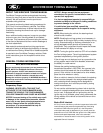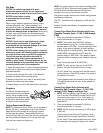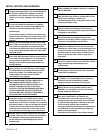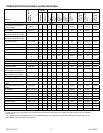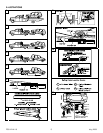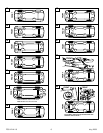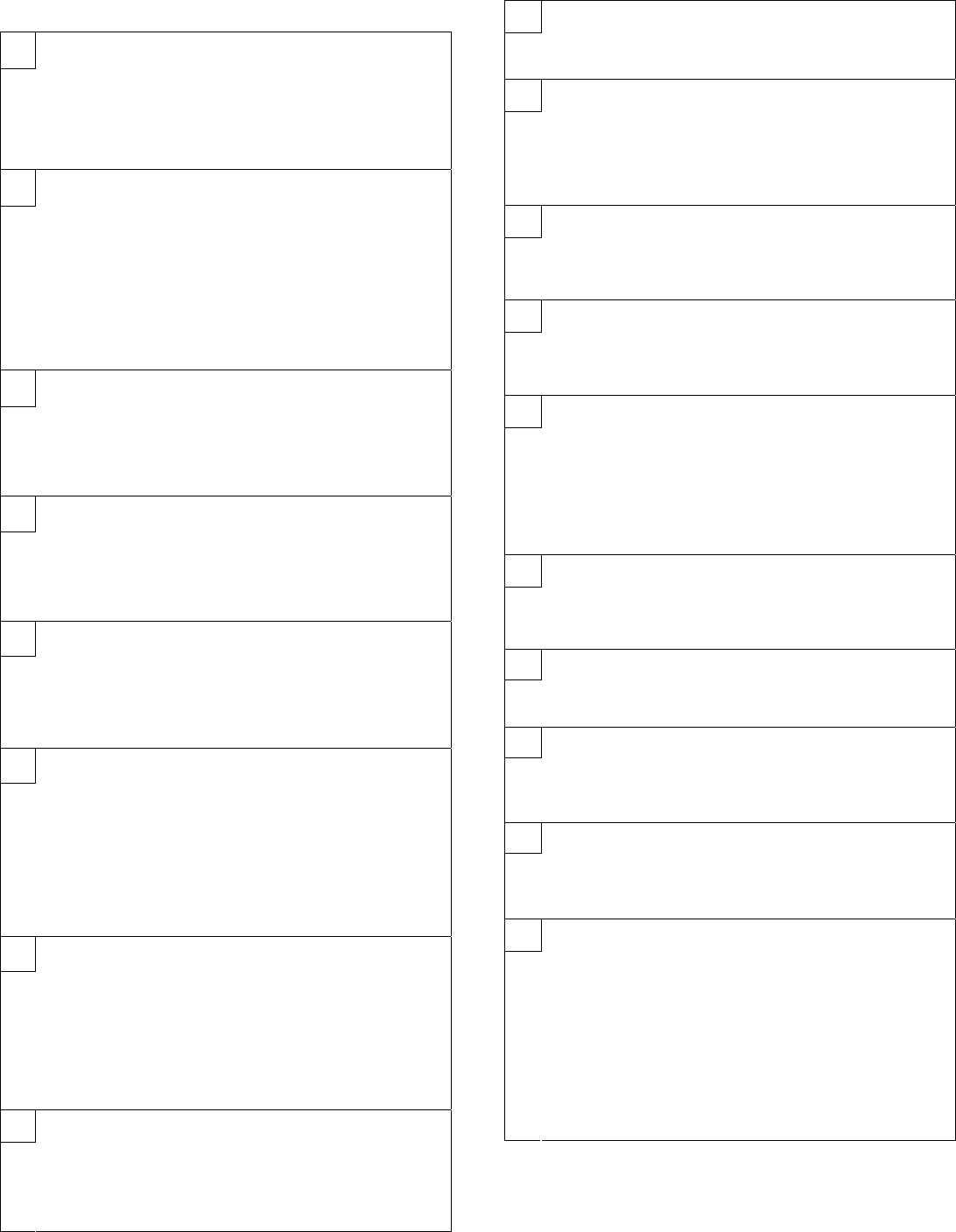
FCS-12141-10 3 July, 2009
NOTES, NOTICES AND WARNINGS
A
NOTICE: Ford Motor Company has not approved a
slingbelt towing procedure. It is recommended that
the vehicle be towed with a flatbed or wheel lift
equipment. If the vehicle is towed by any other
means or incorrectly, damage to the vehicle may
occur.
B
NOTICE: If the vehicle is to be towed from the front
or rear using wheel lift equipment, the lifted tire
must be raised to a clearance height ABOVE the
dollied tire to prevent damage to the vehicle
undercarriage.
The clearance height is the difference between the
bottom of the wheel lifted tire and the bottom of the
vehicle’s dollied tire. (See Illustration numbers 3
and/or 5.)
C
NOTICE: It is recommended that the vehicle (4WD,
AWD, FWD and some RWD) be towed from the rear
using wheel lift equipment. It is required that the
front wheels be placed on a dolly to prevent damage
to the vehicle fascia/bumper and/or the FWD, 4WD
and AWD s
y
stem.
D
NOTICE: It is recommended that the vehicle (4x2,
4WD, AWD, RWD and some FWD) be towed from the
front using wheel lift equipment. It is required that
the rear wheels be placed on a dolly to prevent
damage to the vehicle fascia/bumper and/or the
driveline s
y
stem.
E
NOTICE: On a vehicle equipped with fog lamps or a
sport package, care must be taken not to damage
the components while loading and towing with a
wheel lift or flatbed. For flatbed towing, wrap
loading cable with a shop towel to protect
fascia/bumper from damage.
F
WARNING: ON VEHICLES EQUIPPED WITH THE
FIRE SUPPRESSION SYSTEM, COMPLETE ALL
PRE-TOWING, UNDER-VEHICLE ACTIVITY
(SECURING VEHICLE, CHAINS, STRAPS, ETC.)
BEFORE TURNING THE KEY TO THE RUN
POSITION. THE FIRE SUPPRESSION SYSTEM IS
ACTIVE WHENEVER THE KEY IS IN THE RUN
POSITION AND WILL DEPLOY IF THE MANUAL
ACTIVATION BUTTON IS DEPRESSED.
G
NOTICE: On a vehicle equipped with an air
suspension system, the system switch must be
turned to the off position before the vehicle can be
towed. Refer to the Owner’s Literature for procedure
and switch location. If the rear air bags are deflated,
load the vehicle on a flatbed and use a 4x4 board
under the bed to lift the rear of the vehicle so that
the rear bumper will not drag on the road surface.
H
NOTICE: When a vehicle is towed over very rough,
pitching roads such as a crowned road intersection
at a railroad crossing, towing speed should be
greatly reduced to avoid damaging the vehicle
undercarriage.
I
WARNING: DO NOT TOW VEHICLE BACKWARD
WHEN TOWING THE VEHICLE WITH ALL 4 WHEELS
ON THE GROUND.
J
NOTICE: Crossbeam/spacer blocks must be used to
keep the cable from coming in contact with the chin
spoiler when loading on a flatbed. The
crossbeam/spacer block can be held in place on the
frame using bungee cords.
K
NOTICE: Do not disconnect the driveshaft since the
system is aligned and balanced. Connecting the
driveshaft in the wrong position may cause vibration
or damage to the driveline.
L
NOTICE: Manual transmission vehicles MUST have
the parking brake fully engaged when the rear
wheels are on the dolly. Failure to apply the parking
brake may cause damage to the driveline.
M
NOTICE: It is recommended that the vehicle be
loaded onto a flatbed tow truck with the tow hook
attached to a canvas strap, to prevent damage to the
bottom of the front or rear fascia/bumper covers. If
the cable, chain or strap comes in contact with the
fascia, wrap the tow cable, chain or strap with a
shop towel.
N
NOTICE: It is recommended when using a flatbed,
use mini J-hooks to tie down the front of the vehicle.
Larger J-hooks may cause damage to the
undercarriage.
O
NOTE: For Dual Rear Wheel (DRW) vehicles, it may
be necessary to remove the outer rear wheel when
using wheel lift equipment.
P
NOTE: On a 4WD vehicle with Electronic Shift on the
Fly (ESOF), it is recommended that the vehicle be
towed with a wheel lift and dolly or flatbed
equipment with all the wheels off the ground.
Q
NOTE: On a 4WD vehicle with Manual Shift on Stop
(MSOS) with the lever operated transfer case in
NEUTRAL, it is acceptable to tow the vehicle with
the rear wheels on the ground.
R
NOTE: For towing or operating conditions other
than what is prescribed in this manual, the
driveshaft must be removed to prevent driveline
damage. Always mark the location of the driveshaft
to the attaching flange before removal so the shaft
can be correctly indexed upon installation.
Driveshaft attachment bolts should be replaced with
new OEM bolts or have threadlocking compound
added to the original bolts.
Reinstall the driveshaft per the workshop manual.



